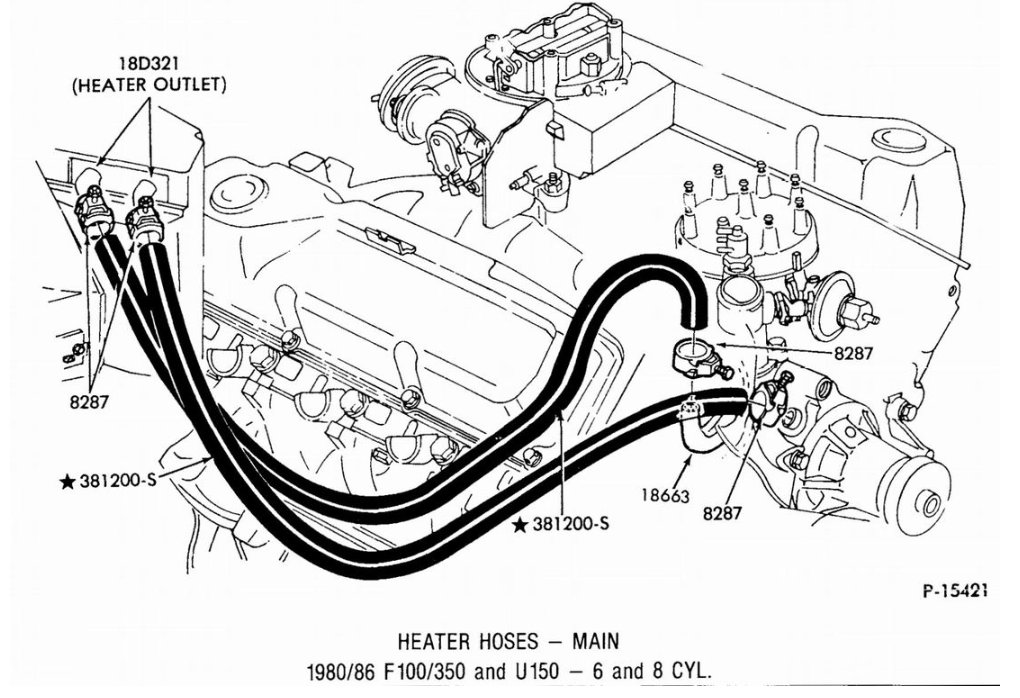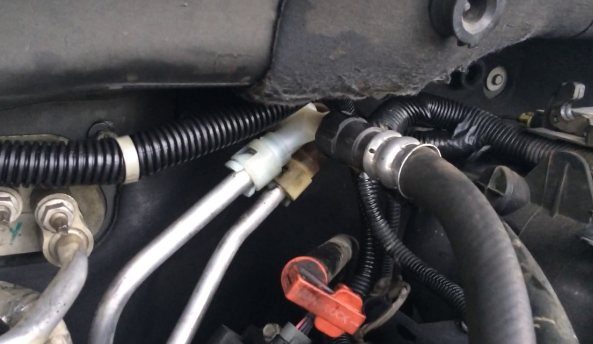Understanding your Chevy Silverado 5.3L heater hose routing can be a bit of a puzzle, especially if previous owners have made modifications. This article will guide you through the standard layout of the 5.3 heater hose routing, with insights derived from experienced users and enthusiasts. The goal here is to provide you with a comprehensive understanding of this crucial system in your vehicle, enabling you to perform maintenance and repairs confidently.
5.3 Heater Hose Routing Diagram
The following diagram shows the proper routing of the heater hoses on a 5.3L engine.

Key Components of the Heater Hose System
| Component | Description |
|---|---|
| Heater Core | A radiator-like device used in heating the cabin of a vehicle |
| Heater Hoses | These transfer coolant from the engine to the heater core |
| Connectors | Fittings that secure the heater hoses in place |
| Coolant Overflow Tank | The reservoir that holds excess coolant fluid |
The heater hose system in your Chevy Silverado 5.3L can be a bit complex, especially if you’re attempting to fix it without prior experience. A common challenge is not knowing where each hose goes. To help understand the routing, a visual aid, such as a diagram, can be highly beneficial. However, it’s essential to note that different models might have slight variations in the layout, especially if they are equipped with additional features like rear heating.
Importance of the Connectors
The heater hose system incorporates various connectors, including plastic quick-connect fittings. These fittings secure the heater hoses to different components of the cooling system. Over time, these plastic connectors may become brittle and prone to breaking, potentially leading to coolant leaks. If the connectors are original and have not been replaced in a long time, it’s highly recommended to replace them as a preventative measure.
Dealing with a Broken Connector
In a broken connector, one temporary solution is to remove the plastic part and secure the hose directly onto the fitting using a hose clamp. This might not be a permanent solution, but it can help you get back on the road, especially if you’re in a remote area with no immediate access to spare parts.
The following table shows the different hoses used on a 5.3L engine.
| Hose Name | Description |
|---|---|
| Coolant Hose | This hose carries coolant from the engine to the heater core. |
| Heater Hose | This hose carries hot coolant from the heater core to the passenger compartment. |
| Bypass Hose | This hose allows coolant to bypass the heater core when the heater is not in use. |
Tips and Tricks:
Here are a few tips and tricks for routing the heater hoses on a 5.3L engine:
- Make sure that the hoses are correctly connected to the fittings.
- Use a hose clamp to secure each hose.
- Be careful not to overtighten the hose clamps.
- Check the hoses for leaks after you have finished routing them.
Conclusion
Understanding your Chevy Silverado 5.3L heater hose routing is not just about performing repairs or maintenance but also about having the knowledge to prevent potential issues and knowing how to handle them when they occur. Remember, it’s always best to consult a professional if you’re uncertain about any aspect of the heater hose system. With this comprehensive guide, you’re now better equipped to navigate the intricacies of your vehicle’s heating system.
Please note that the information provided in this article should be used as a general guideline and may not apply to all Chevy Silverado 5.3L models due to possible variations in manufacturing and previous owner modifications.
